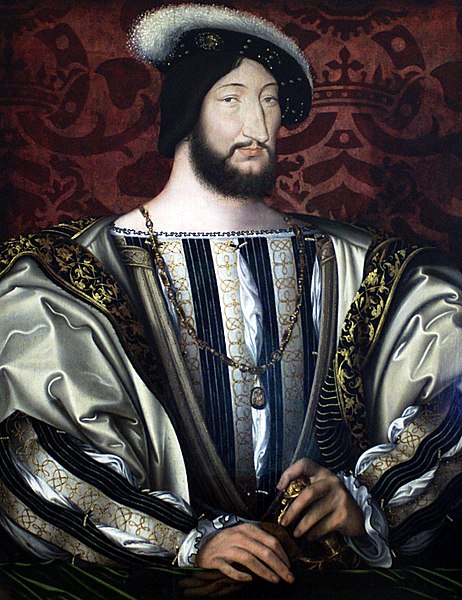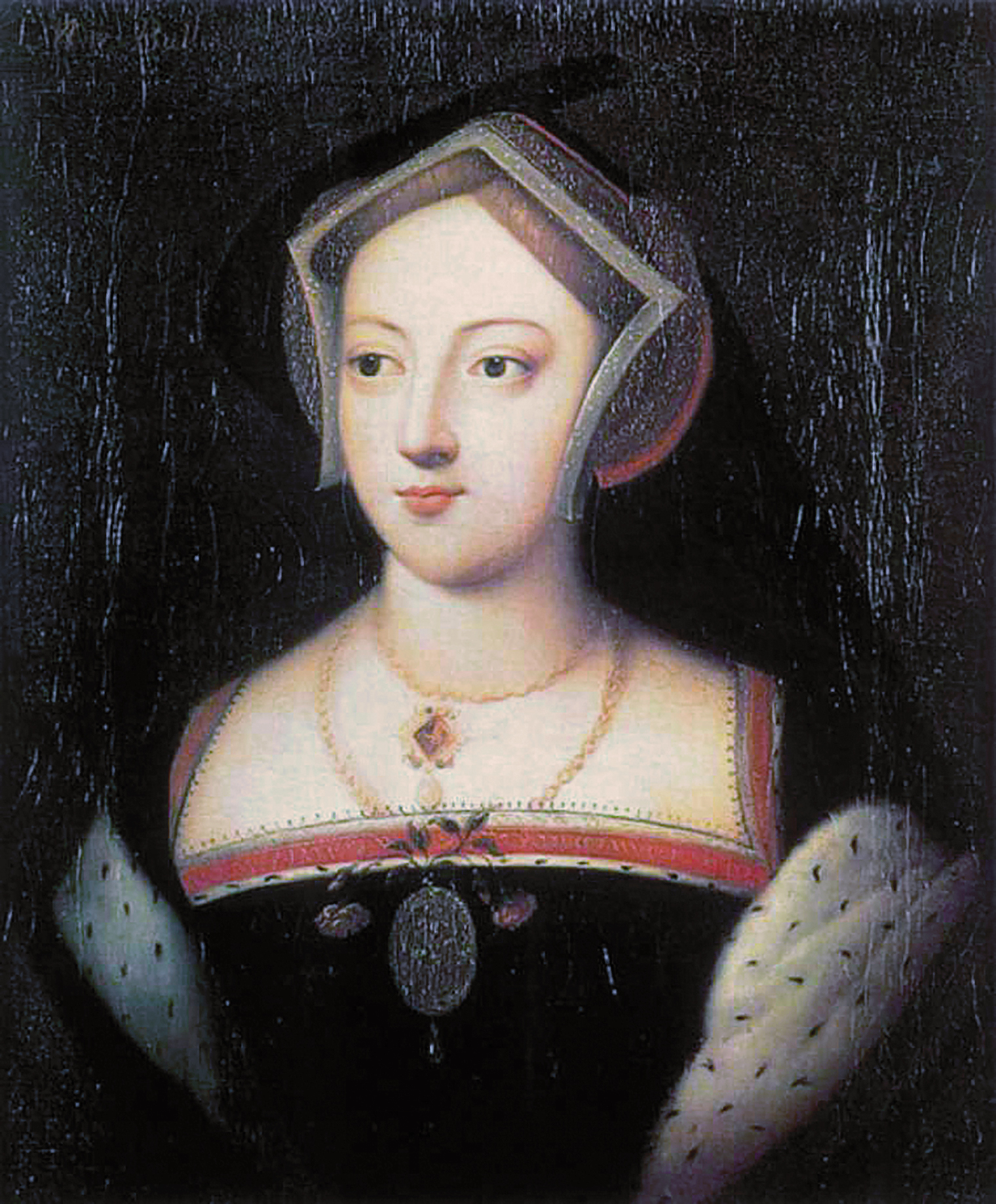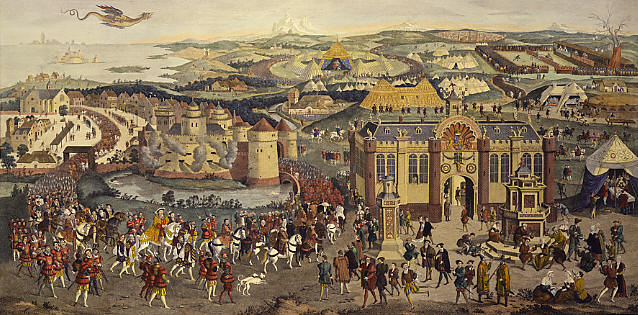 |
| Lady Anne Hastings |
The King’s Mistresses
Henry was
only 25 when his daughter Mary was born and he was not sexually faithful to
Catherine. Henry embarked on a series of casual affairs as soon as Catherine
was pregnant in late 1509. He had been kept closely confined until the death of
his father; and had attendants every time he left home. His bedroom was
accessible only through that of his father’s bed chamber. One ambassador wrote;
‘The king is a youngling,
who thinks of nothing but hunting and girls, and wastes his father’s
patrimony.’[i]
Catherine
publicly protested about only one mistress; Lady Anne Hastings, whose affair with the king was
covered up by Henry’s close friend Sir William Compton. Catherine berated her husband, who
felt ill-used as he had been discreet about the affair. The Spanish ambassador,
afraid that Catherine would lose her influence with Henry, advised caution and
belatedly Catherine complied. She never again made the same mistake.
Henry’s
affair with Elizabeth Blount, which produced Henry Fitzroy[ii] on 5th June 1519, was the
first to last any length of time; starting in October 1514. Henry did not
confine himself to one woman at a time and Elizabeth Blount at one time may
have been a lover of the Duke of Suffolk and a close friend of the king’s.
Allegedly the
affair with the king ended shortly after the young Henry Fitzroy’s birth, when
Henry allegedly began an affair with Mary Boleyn. Elizabeth was married off to Baron Tallboys in 1520. There were even rumours
that Lady Elizabeth Boleyn had been the king’s mistress, but these rumours did
not surface until the marriage with Anne was being mooted. Then Sir Thomas Dingley reported a conversation;
‘I told your Grace that I
feared if ye did marry Queen Anne your conscience would be more troubled at
length, for it is thought that ye have meddled with both the mother and the sister.
And your Grace said “Never with the mother.”’[iii]
Disgrace
 |
| Francois I |
Mary Boleyn
seems to have succumbed to temptation at some point during her stay at the
French court. English observers were shocked by the lax morality at François’
court. The king led from the front, indulging in affairs and mounting a number
of mistresses.
‘Rarely did a maid leave the
court chaste’[iv]
wrote one
observer. It is possible that Mary slept with François, although the evidence
for this is one letter written twenty years later[v]. If the liaison did take
place it was short-lived. John Barlow[vi], who was Thomas’s chaplain for a
period, considered Mary to be the more beautiful of the two sisters. Meanwhile
Anne had become one of Queen Claude’s maids of honour.
Whoever Mary
had fallen with, her family were not pleased; Mary had to be removed from the
new Duchess of Suffolk’s household. From now on Mary was viewed as of little
worth by the Boleyns; she could no longer be of use in a dynastic marriage.
Later rumours claimed that Anne too lost her virginity at the French court; in
July 1535 Henry VIII himself claimed that Anne had failed to live virtuously
all her life[vii].
 |
| Marguerite de Valois |
But for
whatever reason Mary Tudor was to range herself in Catherine’s camp when Henry
was looking for a divorce from his wife. Anne; for her part
‘Blamed Mary Tudor for her
sister’s wild behaviour and all its consequences.’[viii]
After her
service with Queen Claude, Anne then moved on to serve Marguerite de Valois[ix] Duchess of Alençon. She was not to
return home until 1522. George Boleyn was made one of the king’s pages sometime
after 1514 and he stayed in post until 1524. Clearly Mary’s downfall had not
affected her siblings.
On 3rd
August 1519 Thomas’s grandfather the Earl of Ormond died, leaving Thomas’s
mother Margaret as his co-heiress along with her sister. Margaret and her
sister inherited 36 manors and of her share Margaret had the lordship of Rochford, which included Rochford Hall and New
Hall in Essex which was sold to the king two years later[x].
 |
| Rochford Hall |
Margaret
appears to have allowed Thomas to manage her inheritance, but by 1519 she was insane
and Thomas assumed responsibility for her estates. Thomas Butler’s nearest male
relative was Piers Butler who assumed the title of Earl of
Ormond, but Margaret and her sister took steps to stop Piers gaining his
rightful inheritance.
An Advantageous Marriage
Mary Boleyn
was lucky; her family were able to arrange a good marriage for her, despite the
loss of her virginity. There had been connections between the Boleyns and the Carey
family for some time. William Carey was the king’s cousin[xi] and Henry attended the
wedding. William Carey was a member of the Privy Chamber[xii] and an Esquire of the Body to the King; he was a
younger son, but no less attractive as a match for the rising Boleyn family.
 |
| Sir William Carey |
The marriage
was arranged and took place while Thomas was absent in France as ambassador to
the French court. It is inconceivable that he was not cognisant of the
arrangements or that he did not approve. The marriage was held on 4th
February 1520 at Greenwich palace in the newly built chapel royal. The King’s
Book of Payments records Henry’s presence;
‘For the King’s offering on
Saturday, at the marriage of W Care and Mare Bullayn, six shillings and
eightpence[xiii].’[xiv]
William was
about twenty four when he got married to Mary. He was a man much to Henry’s
taste; William jousted, gambled and played tennis. He was also one of the
limited few who was allowed to breakfast in the king’s house.
Life at Court
 |
| Mary Boleyn |
As William’s
wife Mary became part of Henry’s close knit circle. She attended Queen Catherine
when the court decamped to France for the expensive fiasco known as the Field of the Cloth of Gold, where Henry and François attempted
to outdo each other in splendour. William Carey and Thomas Boleyn helped
organise the event held between Guînes[xv] and Ardes where Wolsey had arranged the erection of an amazing palace built of
wood and glass;
‘The foregate of the same
palace or place with great and mighty masonry by sight was arched, with a Tower
on every side of the same portered by great craft, and inbatteled was the gate
and Tower, and in the fenesters, and windows, were images resembling men of
warre redie to cast great stones: also the same gate or Tower was set with
compassed images of ancient Princes, as Hercules, Alexander and other, by
entrayled worke, richly limned with gold and Albyn colours,’[xvi]
 |
| Field of the Cloth of Gold |
The pageant
came to an end on 24th June after a mass celebrated by Wolsey.
Little had been gained by the enormous expenditure and the two exceptionally
egotistical kings had failed to bond.
Henry had already
decided to deal with Emperor Maximilian. Two weeks after his trip to France
Henry, with Thomas in his entourage, rode to Gravelines
to meet the new Holy Roman Emperor Charles V and escort him back to Calais. The two men signed a treaty to make common cause against France in late 1521.
Weddings
to meet the new Holy Roman Emperor Charles V and escort him back to Calais. The two men signed a treaty to make common cause against France in late 1521.
Weddings
Sometime
around 1520 both the young Boleyn boys, Henry and Thomas, died. This double
tragedy must have caused Thomas much grief; two of his pawns that were no
longer available to assist his rise at court. Thomas redirected his attention
to seeking a suitable marriage for Anne. His eye fell on James Butler, the son
of his wife’s cousin, who called himself the Earl of Ormond.
Thomas and
his brother-in-law Thomas Howard, Earl of Surrey[xvii], laid the proposition before Henry.
Henry decided that this was an admirable solution to the suit between the heirs
of Thomas Butler over the Earldom of Ormond and gave his consent. The marriage
negotiations took over a year and in November 1521 Wolsey, who was James
Butler’s master, assured the king that he was endeavouring to bring the matter
to a conclusion. He hoped;
‘To devise with your Grace
how the marriage betwixt [James Butler] and Sir Thomas Boleyn’s daughter may be
brought to pass.’[xviii]
Wolsey
dragged the matter out until the following summer when the negotiations fell
apart. Anne returned from France in January 1522.
Bibliography
Cardinal
Wolsey – Mandell Creighton, McMillan & Co 1891
The Holy
Roman Empire – Richard Heer, Phoenix 1995
Thomas
Cromwell – Robert Hutchinson, Phoenix 2008
Henry VIII –
Robert Lacey, George Weidenfeld & Nicholson & Book Club Associates 1992
The Earlier
Tudors – JD Mackie, Oxford University Press 1992
Rivals in
Power – David Starkey (ed), Toucan Books 1990
The Six
Wives of Henry VIII – Alison Weir, Pimlico 1992
Mary Boleyn
– Alison Weir, AudioGO Ltd 2012
The
Hapsburgs – Andrew Wheatcroft, Folio Society 2004
www.wikipedia.en
[i]
Mary Boleyn - Weir
[ii]
Duke of Richmond and Somerset
[iii]
Mary Boleyn - Weir
[iv]
Mary Boleyn Weir
[v]
Written by the Papal Nuncio in Paris at a time when Queen Anne had miscarried a
son and her future looked insecure
[vi]
Later involved in Henry’s attempts in Rome to obtain a divorce from Catherine
[vii]
At this time Henry VIII was casting round for ways to get rid of his ‘unvirtuous’ queen
[viii]
Mary Boleyn - Weir
[xii]
For which he received the sum of £33. 6s. 8d; In 2013 the relative: historic standard of living value of that income or wealth is £18,640.00 economic status value of that income or wealth is £522,500.00 economic power value of that income or wealth is £7,011,000.00 www.measuringworth.com
[xiii]
In 2013 the relative: historic standard of
living value of that income or
wealth is £186.30
economic
status value of that income or
wealth is £5,220.00 economic power value
of that income or wealth is £70,040.00 www.measuringworth.com
[xiv]
Mary Boleyn - Weir
[xv]
In English hands
[xvii]
Later 3rd Duke of Norfolk
[xviii]
The Six Wives of Henry VIII - Weir
No comments:
Post a Comment
Note: only a member of this blog may post a comment.